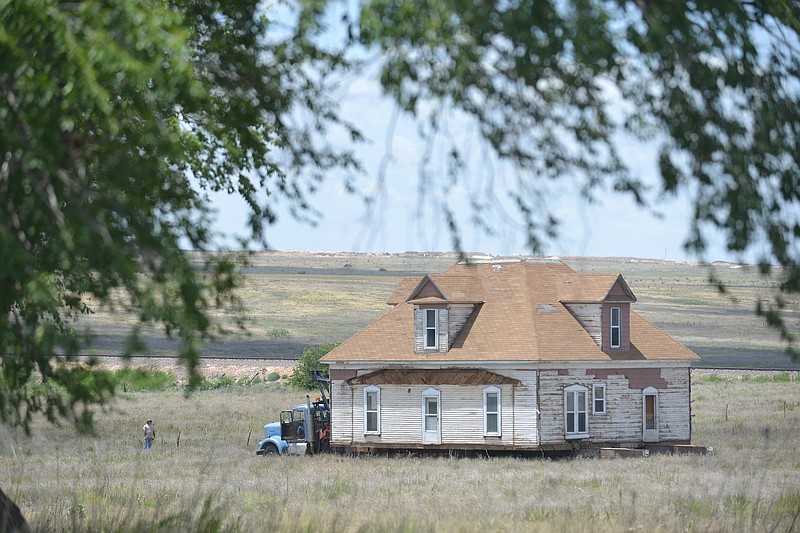CANYON, Texas-She creaks when she moves. Her joints pop as she's lifted from the spot where she's lain for decades. Rising up, she protests as any centenarian might. But move she must.
The Amarillo Globe-News reports one of the oldest houses in Randall County has a new owner.
A crew of movers arrived to pick her up, place her on a modern-day travois and drag her across the prairie to a new home.
Her first owner, W.F. Heller, was the county's first sodbuster. His was an era of recently fenced range, a time when farmers were less than appreciated.
Her new owners, Paul and Heather Burks, receive a goodly part of their income from the government's need to assemble and disassemble nuclear weapons. Equally controversial for some.
Times have changed, and so has she.
More than 40,000 unforgiving prairie suns have weathered the face that was once as white and smooth as alabaster.
She's had work done, but cosmetic procedures only last so long. Certain things are going to sag. Decay is part of the aging process.
Those issues are some of the reasons her former owner, retired attorney Jim Brown, is fine seeing her go.
"He rented it out for quite a number of years, but then it just became too old and he started having trouble with vandals," said retired Canyon Independent School District history teacher and Randall County Historical Commission member Janice Cranmer, who worries about the implications of moving a piece of the county's history. "He lived with the constant concern that vagrants and trespassers might burn it down. So maybe he is saving the history by moving the property."
Who built the house is not in question. It's pretty well-established that the house was the second structure built by Heller-sometime between 1890 and 1899.
According to the book "The Randall County Story from 1541 to 1910," the first structure Heller built-or perhaps more appropriately, excavated-was a dugout shored up and fronted with trees harvested from Palo Duro Canyon shortly after he arrived in the area in April 1887.
There's still some question, however, about the house the Burks just bought.
Based on anecdotes and hearsay, historians and locals alike say it is a Sears Catalog Home-a pre-planned, pre-fabricated trend that swept the nation in the early 20th century with about 70,000 of various models being erected across the nation.
The problem is, Sears didn't market its kit homes until 1908.
Indications are that Heller built this home in the 1890s.
Burks admits he and wife, Heather, don't know a lot about the home and the history to which it might have been privy.
But there will be plenty of time for that. They've given themselves a five-year window and a budget of less than $250,000 to restore her to the point that she is habitable.
That's a lot of reading, researching and sleuthing time that could be dedicated to learning what her walls have seen and heard.
A metal roof, wraparound porch and opening up space between the kitchen, dining room and living room are planned.
The couple has begun a scrapbook to document the transformation.
Because the home is not historically registered, Brown said there is nothing to prevent him from selling.
"I didn't want to sell the land out here," he said. "I've had a lot of people who wanted to buy the house, but they always wanted a couple of acres, too."
The Plains Indians familiar to the generation that built her have been replaced with white men in shorts and T-shirts.
The horse replaced with a sputtering, belching tractor trailer. The travois' wooden poles replaced with great steel beams.
The prairie grasses sway, crickets chirp, birds wake as members of Hawkins McDowell House and Structure Movers walk in front of the truck, carefully picking a path across a pasture, bound for more-established asphalt trails that lead to the house's next resting place.
Cecil Hawkins said his company has moved a lot of structures in its 64-year history, but not many as tall as the Heller house.
More than 70 power lines stood in the way of moving the house to the Burks' property, a rural pasture off City Lake Road. It was a two-day, 18.5-mile journey. Fence posts and road signs were temporarily removed. Tree limbs were raised with the sound of roaring chainsaws.
"We surely do not want to mess this up," Hawkins said. "But it's a well-built house. They built it to last."

